|
All Saints CITY Bristol |
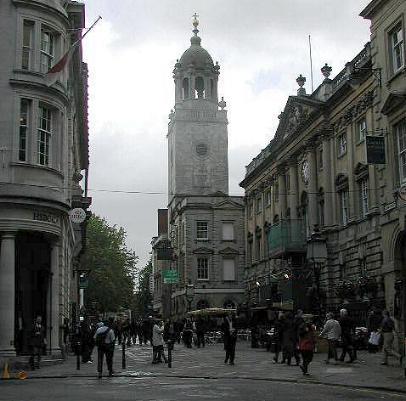 |
The church of All Saints is one of three medieval churches grouped at the crossroads of the medieval city. Probably a pre-Conquest foundation (Leland mentions it as already existing in 1066), the church has been enlarged and altered over successive centuries. The graceful tower and cupola replaced an earlier one, and was begun in 1712. It is an odd mixture of Gothic and Classical forms. It was completed in 1717. The cupola was rebuilt in 1807 by Luke Henwood, the City Surveyor. The tower was further restored in 1930 and 1972. Since 1973 the parish was joined with Christ Church and the church has developed a new life as a Diocesan Education and Resource Centre. It is generally not open to the public, although the interior can be glimpsed through the glazed west doors.
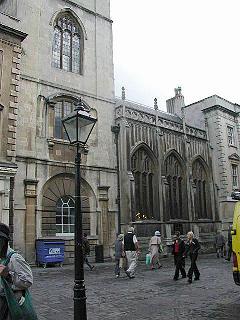 |
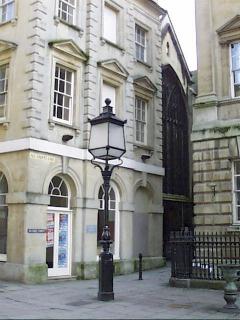 |
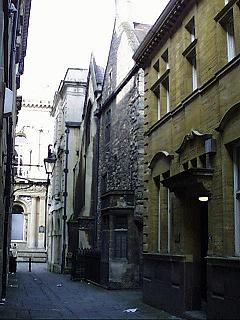 |
The pictures above show the enclosed site. The principle entrance was on Corn Street and the present west entrance is Victorian. When Thomas Paty rebuilt the House of the Guild of Kalendars over the north-west corner of the church in 1782, he also rebuilt the remaining north wall of the aisle shown above left squeezed between the tower and Paty's Coffee House. Over the south-west corner of the church was The Parsonage or Glebe House, which still survives (picture right). Two small windows open into the wider C15 south aisle inside the church which was also the chapel of the Kalendars. A very small lane runs around the south and east sides of the church, but has been gated to prevent access in recent years.
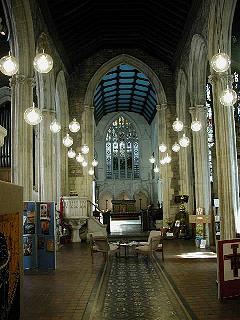 |
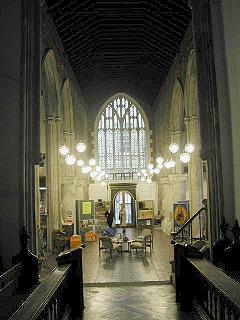 |
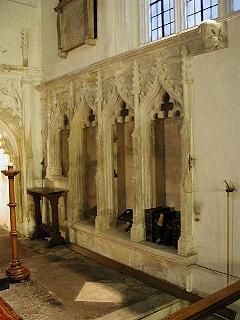 |
The two west bays of the arcades date from c1140, the majority of the rest was rebuilt in the C15 Perpendicular style c1430-50, with tall three-bayed arcades and wider aisles. The main roof dates from c1900 and replaced a flat ceiling. The chancel was much rebuilt in 1850 when it was shortened by six feet to recreate an east window. (The original walled up window survived in the building to the east for many years). The fine sedilia date from c1900 too.
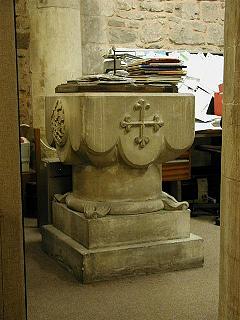 |
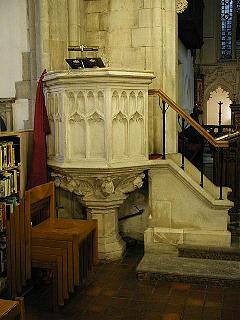 |
Many fittings remain largely in situ among the later bookcases and tables. The font is a big bulky neo-Norman effort but the pulpit also of stone may in part be C15, but reworked by the Victorians with panelled tracery and a base with angel corbels. The stairs are less fortunate in design.
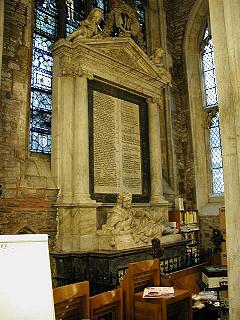 |
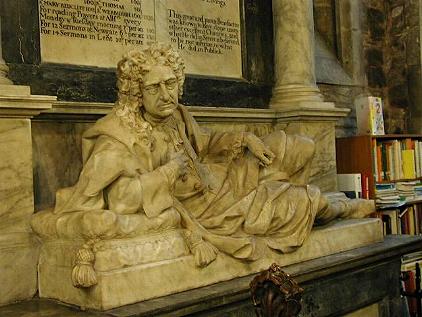 |
At the east end of the south aisle is the huge reredos type standing monument to the Bristol philanthropist and benefactor, Edward Colston; less of a hero today, he made much of his fortune by the transportation of slaves from Africa to the Carribean and New World. He died in 1721 and is shown in a fine marble effigy by Rysbrack. A list of his charities occupies much of the inscription. the large window behind has stained glass by Sir Henry Holiday, 1907.
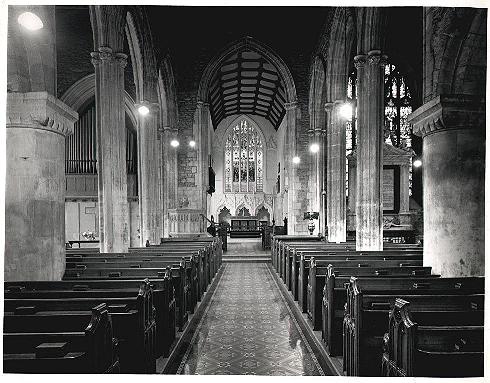 |
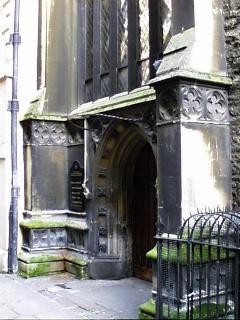 |
The archive picture (left) comes from the collection of Rev. D.Cawley, used with permission, and shows the church interior shortly before it closed.
Page updated 29th May 2009